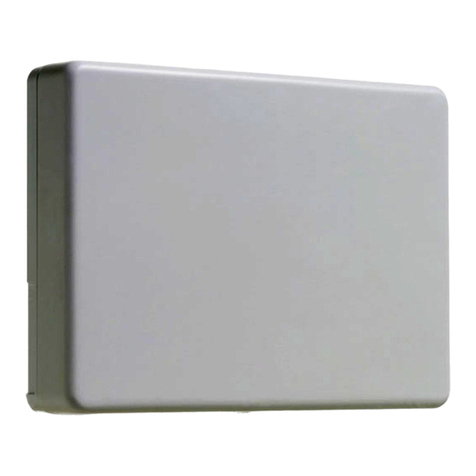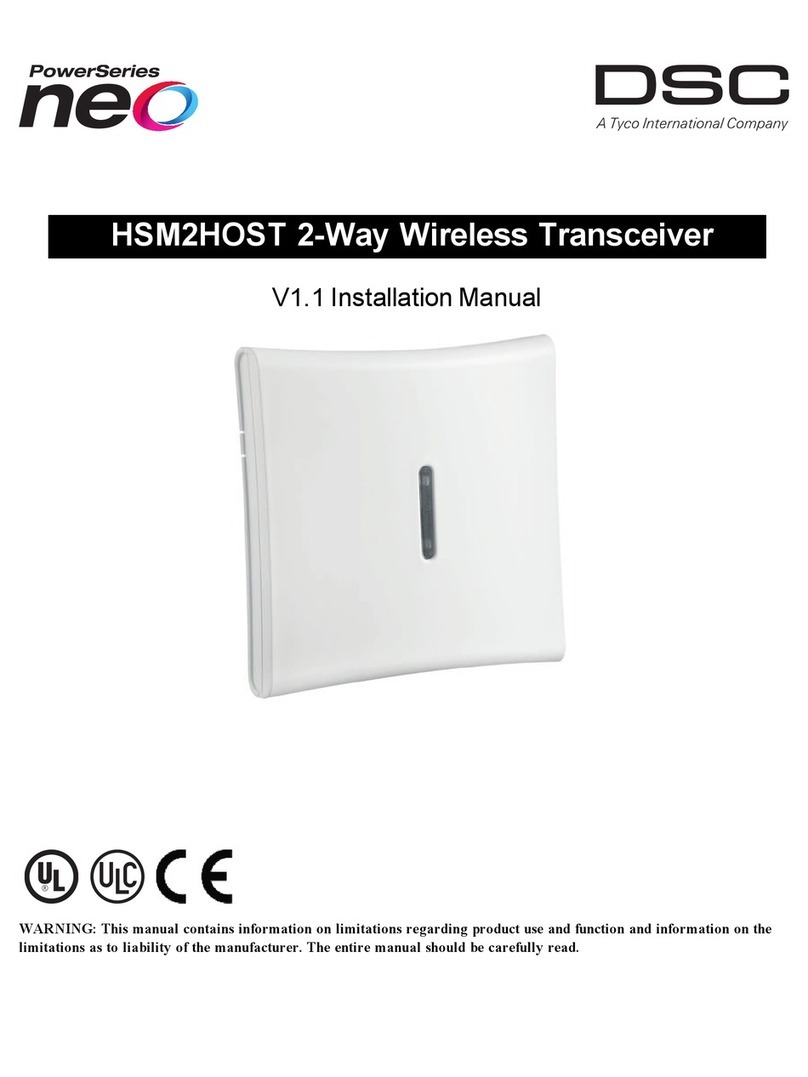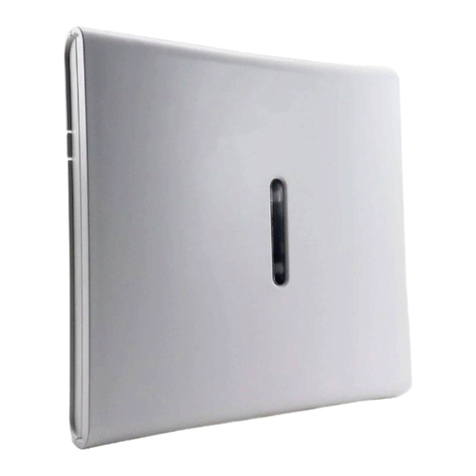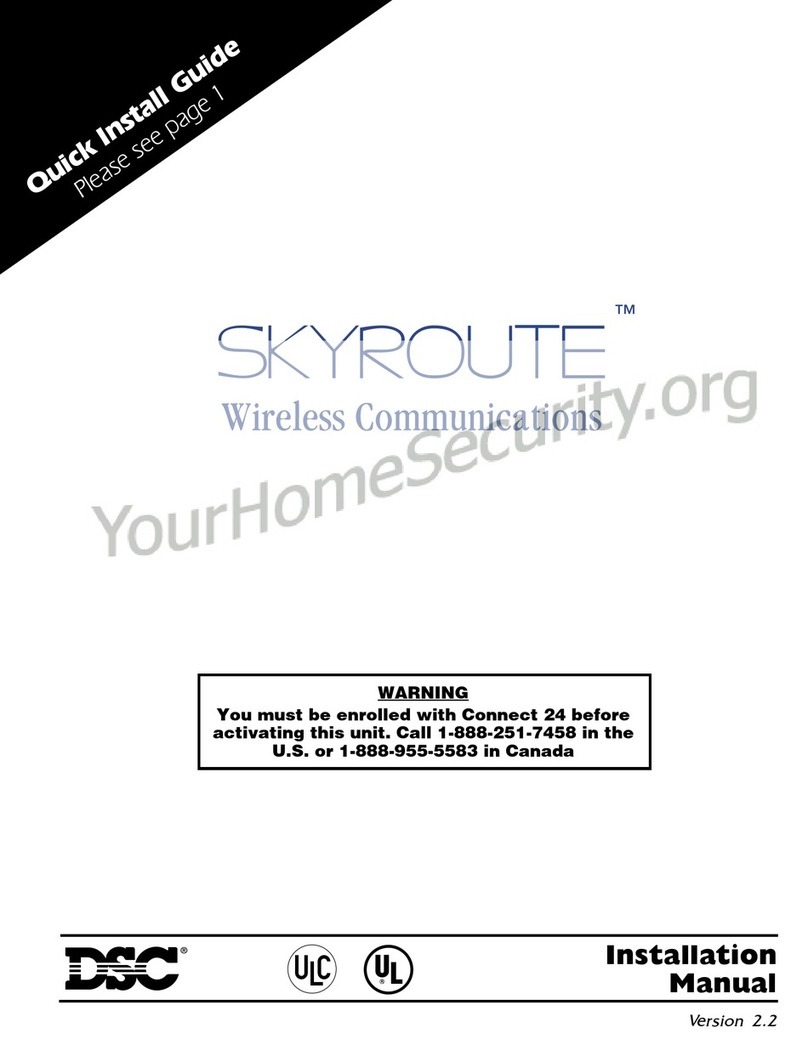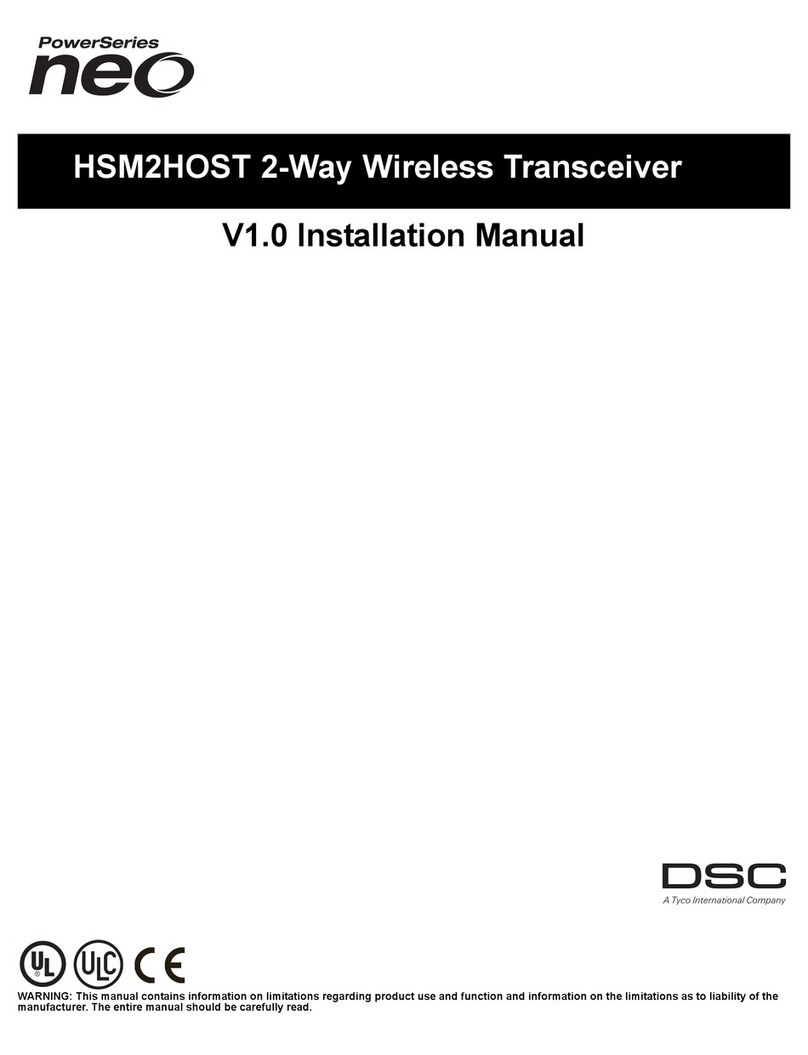
Introduction
The HSM2HOSTx two-way wireless transceiver adds wireless capability to PowerSeries Neo alarm
controllers, model HS2128, HS2064, HS2032 or HS2016. This manual describes how to install, program
and maintain the HSM2HOST. Note that only one HSM2HOST or one RFK keypad can be enrolled
on the alarm system.
Controls and Indicators
Status LEDs
The LEDs on the front of the HSM2HOST provide feedback regarding the installation, operation and
troubleshooting of the unit. The LEDs function as follows:
Red LED Operation
ModulePower Up: Onsteadyduringmodule power-upsequence thenoff.
FirmwareUpdate: Slow flashing = update in progress
Rapid flashing = update failed
TroubleCondition: lNo trouble: 1 rapid flash every 10 seconds.
If troublesare present,a seriesofflashesoccur every2seconds.
Eachseriesofflashesindicate troublesasfollows:
l1 flash: Module not enrolled
l2 flashes: Loss of contact with module for over 60 seconds
l3 flashes: Corbus low voltage
l8 flashes: RF interference (jam condition)
ModuleConfirmation: Flashesrapidlyduringmoduleconfirmationprocess.
PlacementTest: Onsteadywhenlocationisbad.Offwhenlocationisgood.
Green LED Operation
PlacementTest: On steady when location is suitable. Off when location is unsuit-
able.
Note: For UL/ULC listed systems, signal must be “Strong”. See
Wireless Device Status Indications on page 10 for details.
Tamper
The HSM2HOST has separate built-in wall and case tampers. The case tamper is disabled by default
on the NA version (enabled on EU version).
Section [804][810] option 3 enables or disables the case tamper. Enable or disable the wall tamper by
fastening the breakaway wall tamper bracket securely to the wall using one of the supplied screws.
The case tamper activates when the case is opened and restores when the case is closed. The wall
tamper on the back of the unit is depressed by the mounting surface when properly installed. If the unit
is removed, the tamper activates. Ensure the mounting surface is smooth and free of obstructions that
block access to the rear of the unit. Electrical wires should not run over or under the module when it is
mounted.
Note: The built in wall and case tamper must be installed and enabled for UL/ULC listed Commercial/
Residential Burglary applications.
- 6 -







